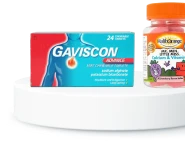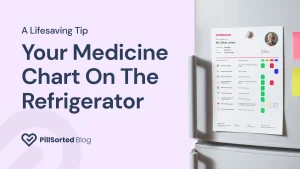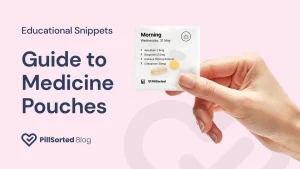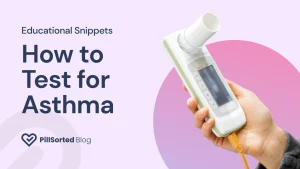Understanding Asthma Inhalers & How to Use Them
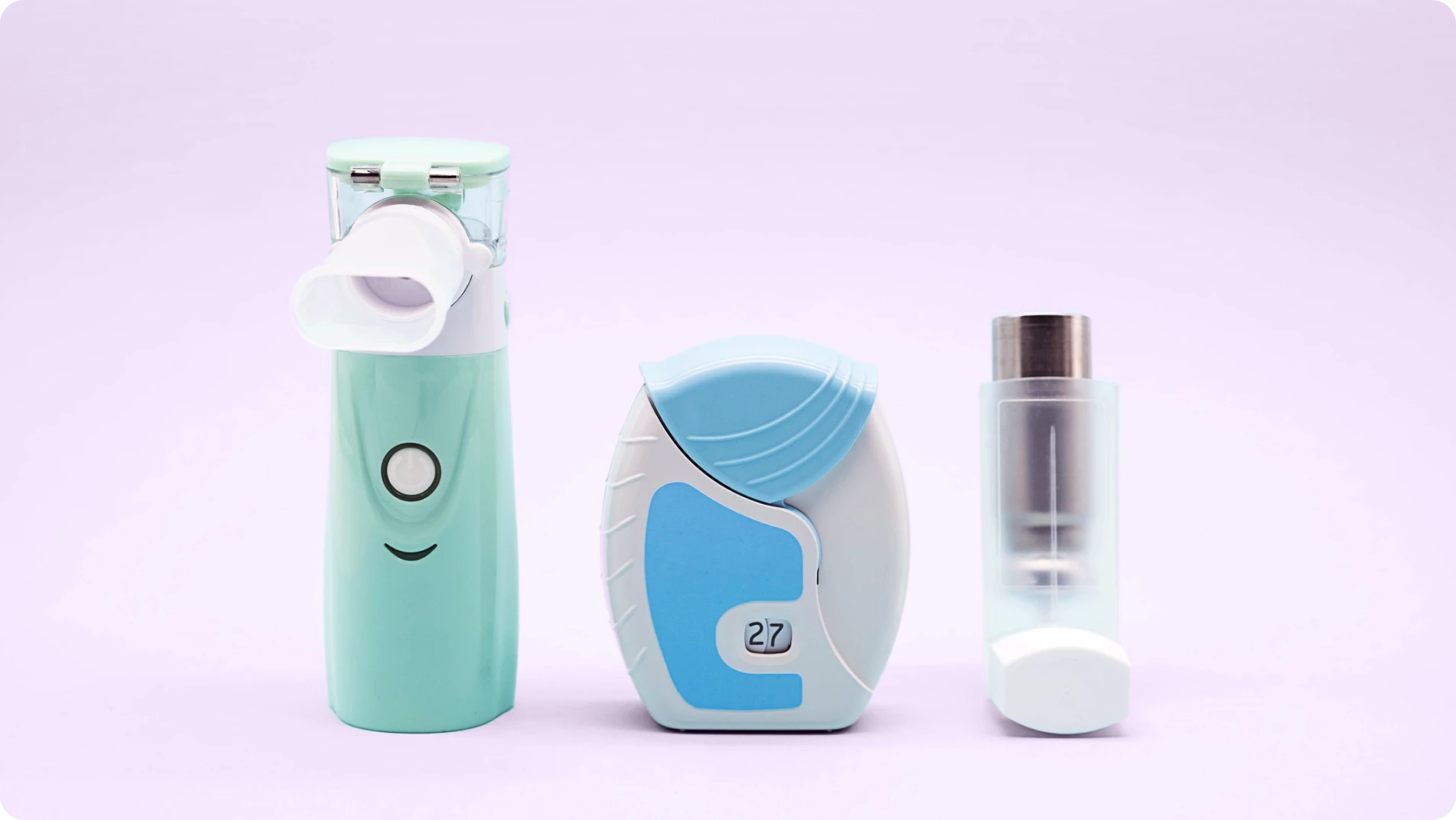
If you have lots of questions about asthma inhalers (puffers), you’re not alone! Understanding inhalers can be confusing with so many devices available, each with its own unique design, medication, and instructions for use. Additionally, inhaler devices may have different mechanisms for administering the medication, such as pressurized metered-dose inhalers (pMDIs), dry powder inhalers (DPIs), or soft mist inhalers (SMIs), further adding to the complexity. That’s a lot to manage and remember. Especially since asthma symptoms and severity usually change throughout your lifetime, and battling them gets harder as you age.
To help you navigate and understand the nuances of asthma inhalers, we’ve put together this article. In it, we’ll explore the different types of asthma inhalers, the medications they contain, and how to use them properly. We hope it helps answer some of your questions, give you better control over your asthma, and improves your quality of life.
In this post:
- Understanding Asthma Inhalers
- Types of Asthma Medications
- How to Use Your Asthma Inhalers
- Asthma Pharmacy Medicine Toolkit
- Inhaler (Puffer) Dos & Don’ts
- Main Takeaways
Understanding Asthma Inhalers
Asthma inhalers are devices that deliver medication directly to your lungs, providing quick relief of symptoms or long-term control of asthma. There are two main types of inhalers: relievers (or rescue inhalers) and preventers (or controller inhalers). While relievers are used to provide immediate relief of asthma symptoms during an asthma attack, preventers are used regularly to reduce inflammation in the airways and prevent asthma symptoms from occurring.
Furthermore, reliever and preventer inhalers can deliver medicine in two forms: as an ‘Aerosol‘ (including metered dose inhalers, breath-actuated metered dose inhalers, and soft mist inhalers) or as a ‘Dry powder‘. The choice between the aerosol and powder group of inhalers depends on factors such as your individual preference, ability to use the device effectively, and availability of specific medications in each form. Let’s take a closer look at each group:
Aerosol Group
The Aerosol Group encompasses a range of inhaler devices designed to deliver medication directly to the lungs in the form of a fine mist or aerosol. Each type of aerosol inhaler has its own advantages and considerations. A healthcare provider can help you determine which option is most suitable for your needs and preferences.
- Metered dose inhaler (MDI): delivers a specific amount of medication with each actuation (press). MDIs typically consist of a pressurized canister containing the medication, a metering valve, and a mouthpiece. You must coordinate your inhalation with the actuation of the device to ensure proper medication delivery.
- Breath-actuated metered dose inhaler (BAI or BA-MDI): automatically releases medication when you inhale, eliminating the need for coordination between actuation and inhalation. This can be particularly beneficial if you struggle with the timing of traditional MDIs.
- Soft mist inhaler (SMI): a newer type of inhaler that delivers medication as a slow-moving mist, providing a longer period for inhalation and potentially reducing the impact of coordination issues. SMIs typically use a mechanical pump to generate the mist, offering an alternative option if you find using MDIs or BAIs is challenging.
Dry Powder Group
Within the Dry Powder Group, there are several types of inhaler devices designed to deliver medication in powder form to the lungs. These inhalers do not require propellants and rely on the user’s inhalation to disperse the medication powder into the lungs. DPIs are breath-activated or manually operated and do not require coordination between actuation and inhalation.
- Dry powder inhaler (DPI): which relies on your inhalation to disperse the medication powder into the airways. DPIs typically contain a reservoir of medication powder and a mechanism for dispersing the powder, such as a breath-activated or manually operated device. Unlike MDIs, DPIs do not contain propellants and do not require coordination between actuation and inhalation.
- Multi-dose powder inhaler (MDPI): allows for multiple doses of medication to be loaded into the device and dispensed sequentially. MDPIs are convenient if you require multiple doses throughout the day and can help make sure you don’t miss a dose.
- Soft mist (SDPIs): contain pre-measured doses of medication in individual capsules or blisters. SDPIs are portable and easy to use, making them suitable for on-the-go use.
Types of Asthma Medications
Asthma medications delivered via inhalers can be broadly classified into two categories: bronchodilators and anti-inflammatory drugs. Let’s take a quick look at each:
- Bronchodilators, the medication typically used in reliever inhalers, work by relaxing the muscles around the airways, helping alleviate symptoms such as wheezing, shortness of breath, and chest tightness, making it easier to breathe. One common type of bronchodilator is short-acting beta-agonists (SABAs), such as Salbutamol. This rapid bronchodilatory effect helps restore airflow and relieve acute asthma symptoms, making SABAs an essential component of asthma rescue medication. There are long-acting beta-agonists (LABAs) that are generally used with Steroid in combination inhalers, and provide longer maintenance and control.
- Anti-inflammatory drugs, the medication typically used in preventer inhalers, reduce inflammation and swelling in the airways, helping to treat and prevent asthma symptoms. They include corticosteroids, ) and leukotriene modifiers and leukotriene receptor antagonists (LTRAs). Corticosteroids, both inhaled and oral forms, are among the most effective anti-inflammatory drugs used to manage asthma.
How to Use Your Asthma Inhalers
Are you sure you’re using your inhaler correctly? Studies show that the majority of patients use their inhalers inaccurately. To help you improve your technique and better manage your respiratory symptoms, here are some general tips and steps for using asthma inhalers effectively. Keep mind that using asthma inhalers correctly depends on which group your device belongs to (Aerosol or Dry Powder).
- Shake the inhaler well before each use.
- Hold the inhaler upright and exhale fully before inhaling the medication.
- Place the mouthpiece of the inhaler between your lips and form a tight seal.
- Press down on the inhaler to release the medication and inhale:
- For aerosol inhalers, inhale slowly and steadily.
- For dry powder devices, breathe quickly and deeply.
- Hold your breath for a few seconds to allow the medication to reach the lungs.
- Rinse your mouth with water and spit it out after using a corticosteroid inhaler to prevent oral thrush.
We also highly recommend you get a demo from your health provider. And visit this page on How to Use Your Inhaler from Asthma and Lung UK. It provides video explanation on how to use over 20 kinds of inhalers.

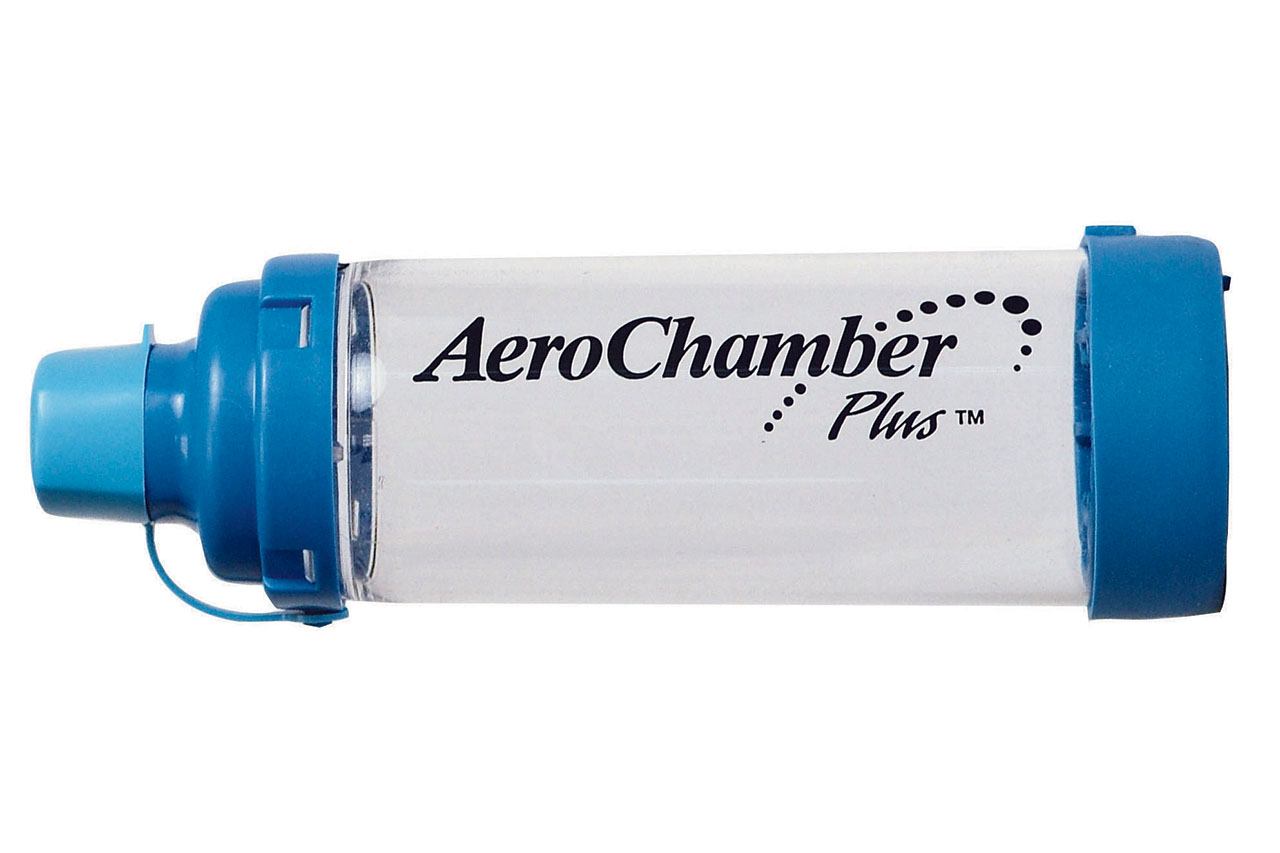
AeroChamber Plus
AeroChamber Plus is a medical device designed to enhance the delivery of inhaled medications, including asthma medications, to the lungs.
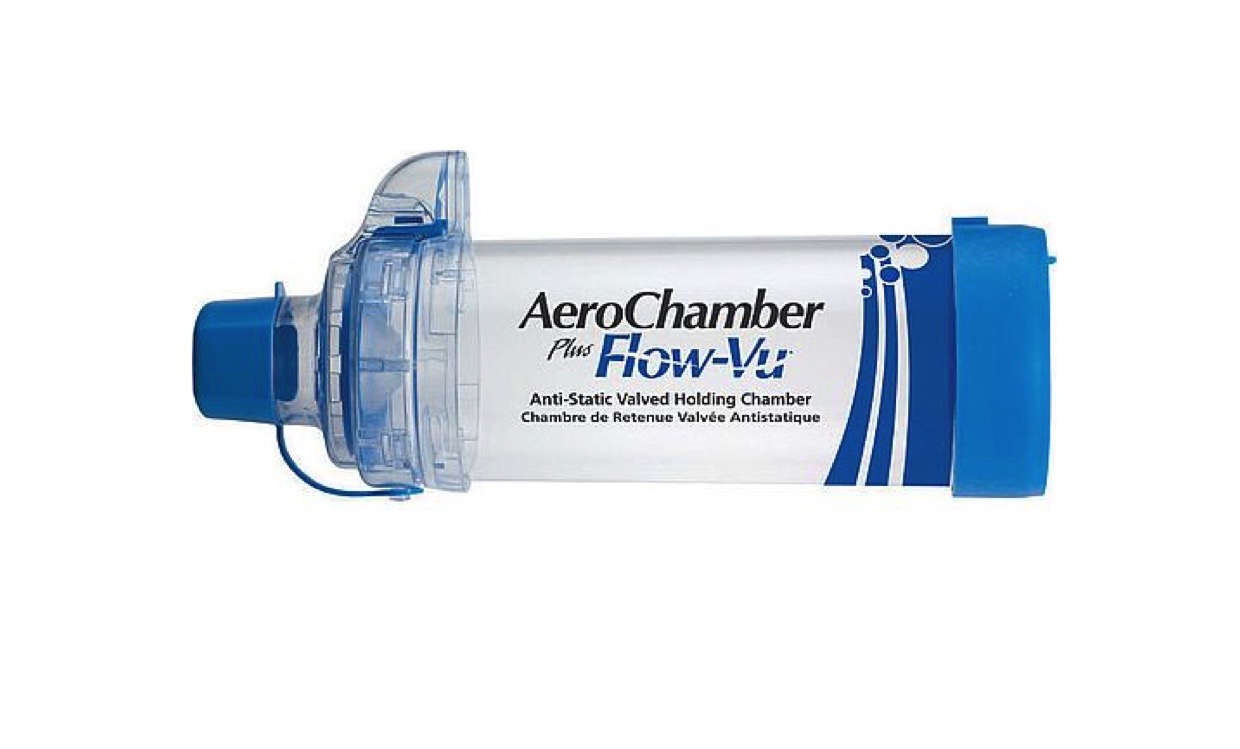
AeroChamber Plus Flow-Vu Anti-Static
The AeroChamber Plus Flow-Vu Anti-Static is a medical device designed to enhance the delivery of medication from metered-dose inhalers (MDIs) to the lungs.
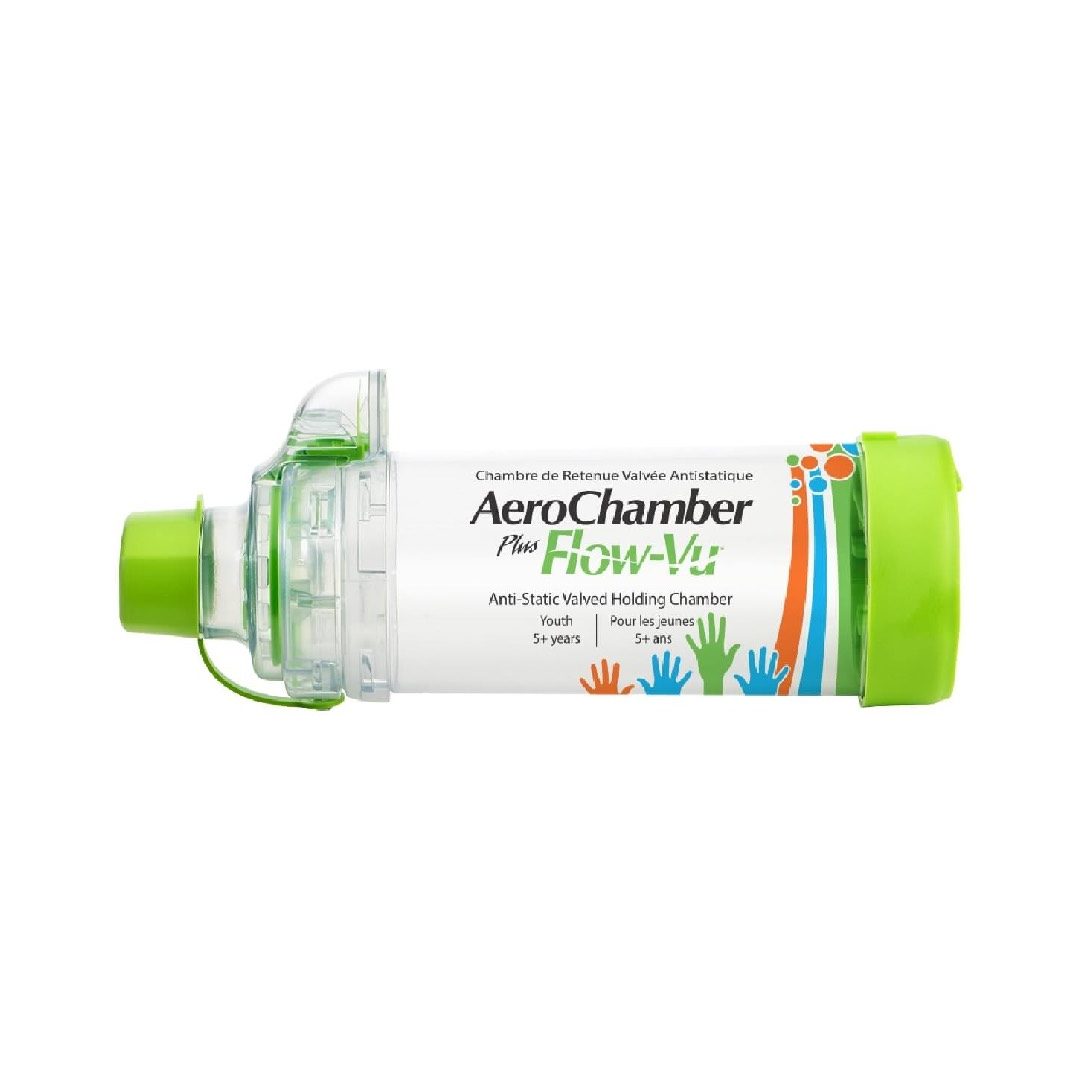
AeroChamber Plus Flow-Vu Anti-Static Youth 5+ Years
The AeroChamber Plus Flow-Vu Anti-Static youth 5+ years is a specialized medical device used in conjunction with metered-dose inhalers (MDIs) to deliver medication effectively to children aged 5 years and older with asthma or respiratory conditions.
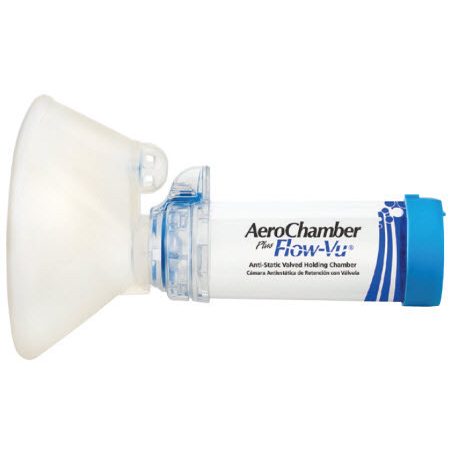
AeroChamber Plus Flow-Vu Anti-Static with Adult Large Mask
The AeroChamber Plus Flow-Vu Anti-Static with adult large mask is a medical device designed to improve the delivery of medication from metered-dose inhalers (MDIs) to the lungs.
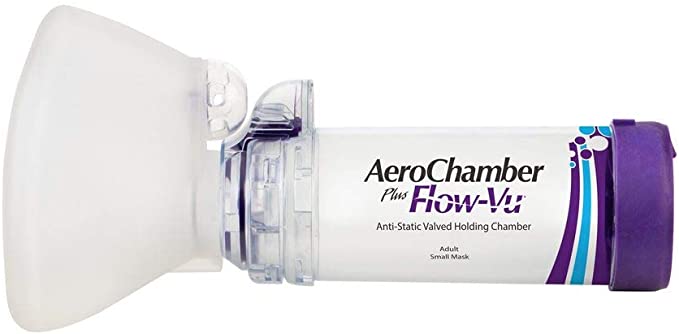
AeroChamber Plus Flow-Vu Anti-Static with Adult Small Mask
The AeroChamber Plus Flow-Vu Anti-Static with adult small mask is a medical device designed to assist those with asthma or other respiratory conditions in effectively inhaling medication from metered-dose inhalers (MDIs).
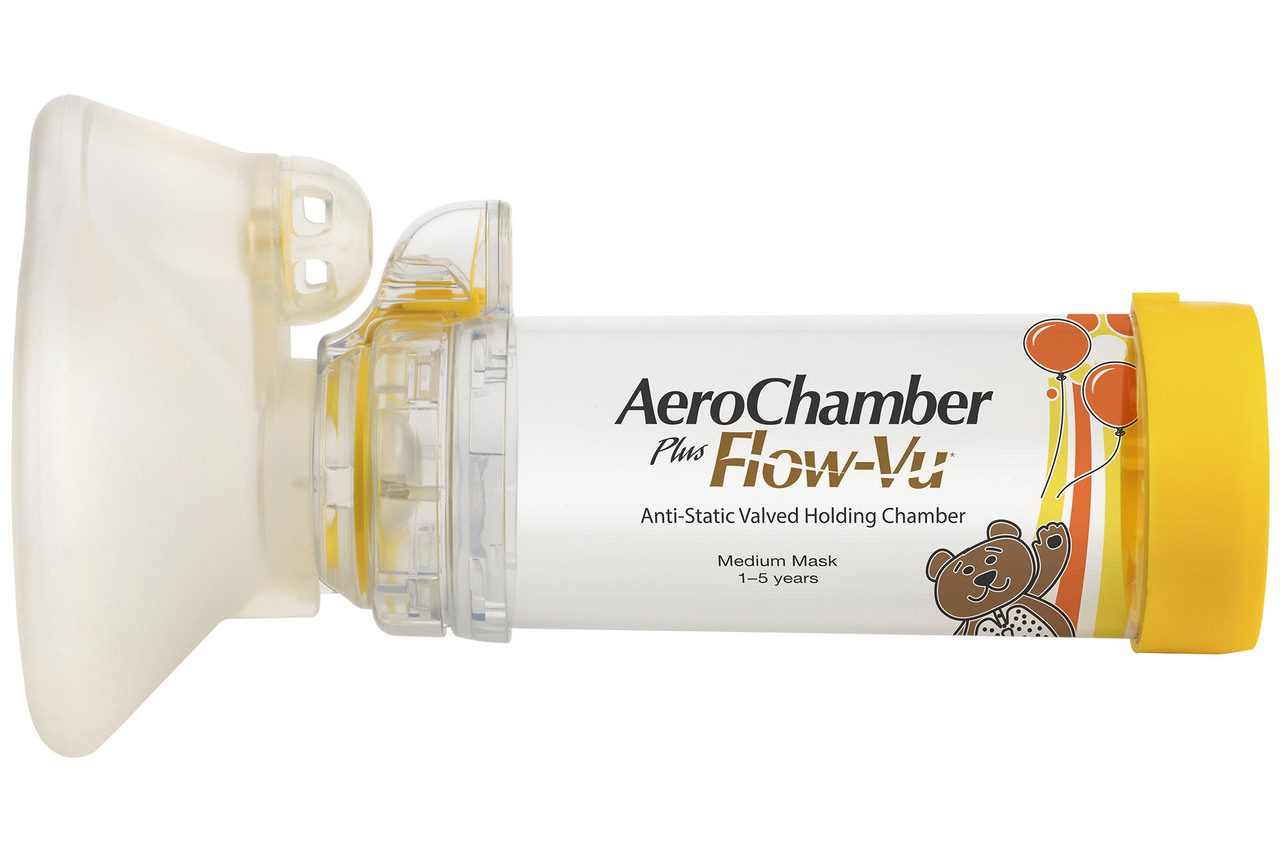
AeroChamber Plus Flow-Vu Anti-Static with Medium Mask Child 1-5 years
The AeroChamber Plus Flow-Vu Anti-Static with medium mask for children aged 1-5 years is a medical device designed to aid in the delivery of medication from metered-dose inhalers (MDIs) to young children.
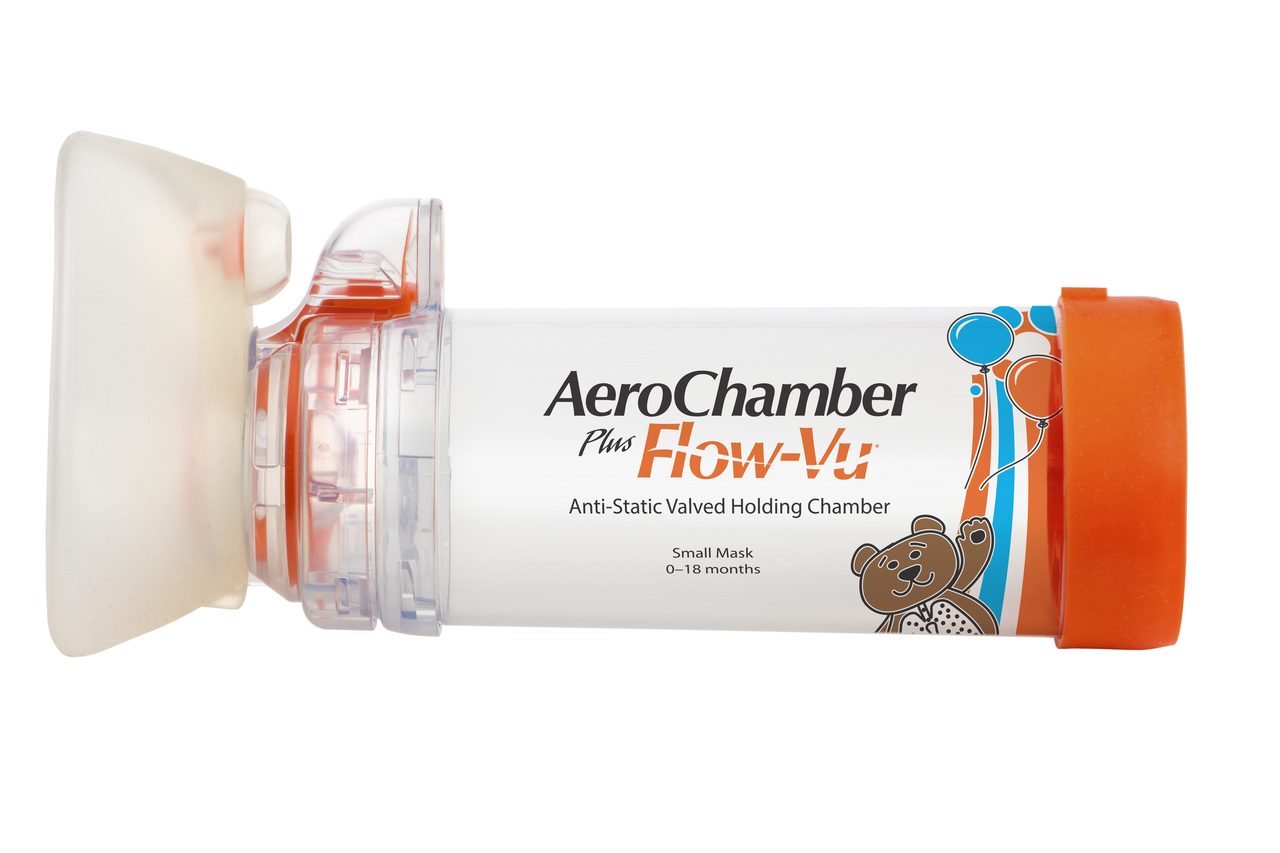
AeroChamber Plus Flow-Vu Anti-Static with Small Mask Infant 0-18 Months
The AeroChamber Plus Flow-Vu Anti-Static with a small mask for infants aged 0-18 months is a specialised medical device designed to assist in the delivery of medication from inhalers to young children.
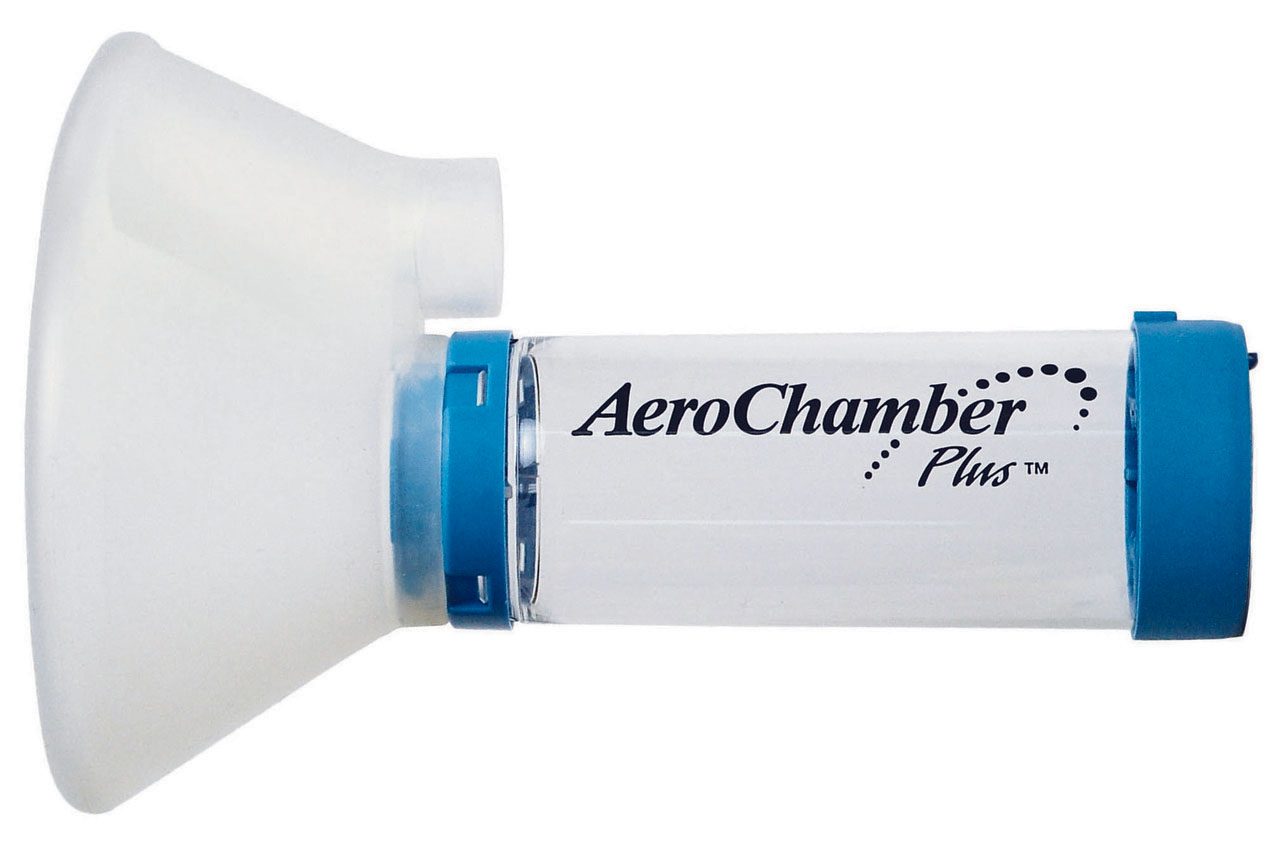
AeroChamber Plus with Adult Mask
The AeroChamber Plus with adult mask is a medical device designed to enhance the delivery of medication from metered-dose inhalers (MDIs) to the lungs.
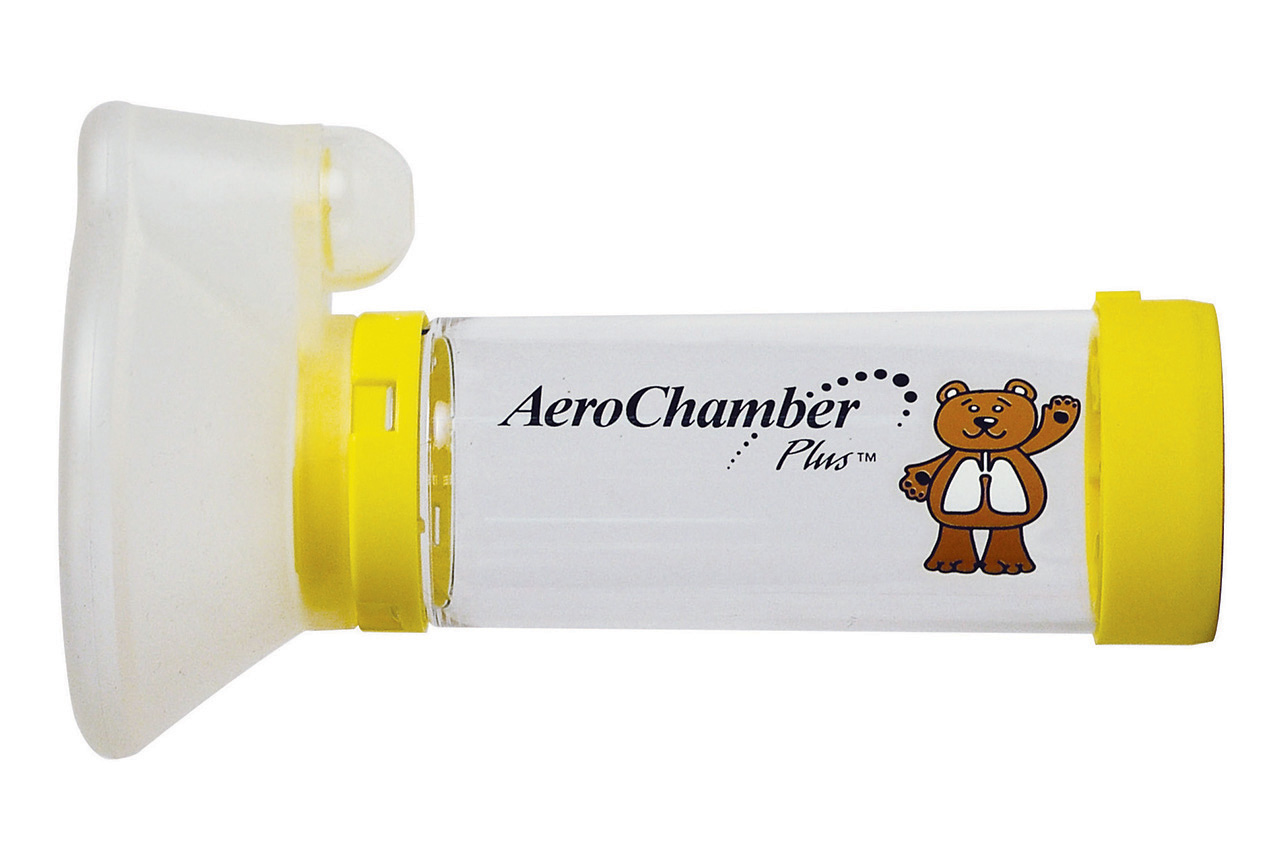
AeroChamber Plus with Child Mask
The AeroChamber Plus with child mask is a medical device designed to assist children in effectively inhaling medication from metered-dose inhalers (MDIs).
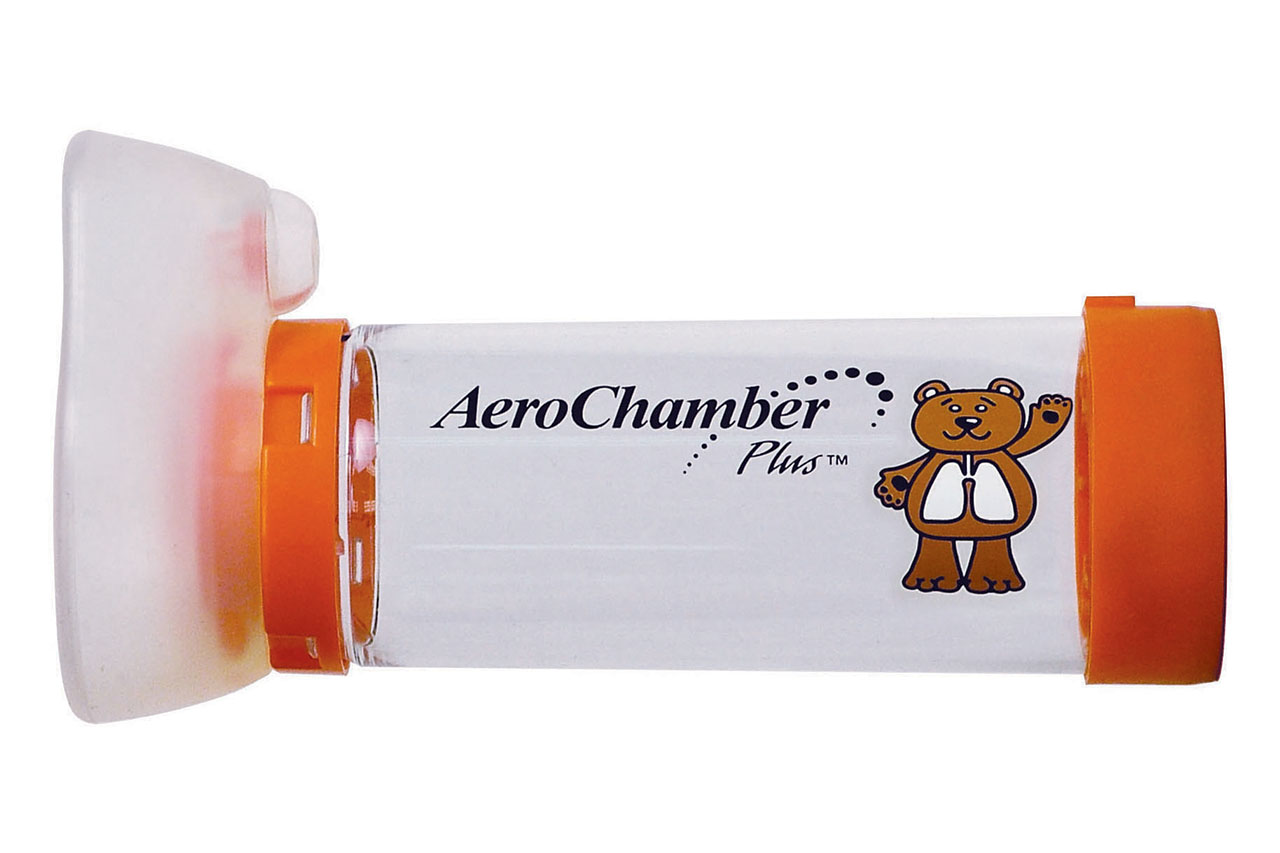
AeroChamber Plus with Infant Mask
The AeroChamber Plus with infant mask is a specialised medical device designed to assist infants and young children in effectively receiving medication from inhalers.
Inhaler (Puffer) Use Dos & Don’ts
| Do | Don’t |
|---|---|
| Shake your inhaler well before each use to ensure proper mixing of the medication. | Don’t forget to rinse your mouth with water and spit it out after using a corticosteroid inhaler to prevent oral thrush. |
| Exhale fully before inhaling the medication to maximize lung deposition. | Don’t exhale into the inhaler before inhaling the medication, as this can cause contamination of the device. |
| Form a tight seal around the mouthpiece of the inhaler with your lips to ensure optimal delivery of the medication to the lungs. | Don’t use your inhaler in a lying-down position, as this may affect the distribution of the medication in the lungs. |
| Know what kind of inhaler you have (Aerosol or Dry Powder) to use the right inhale technique. | Don’t store your inhaler in extreme temperatures or direct sunlight, as this can affect the stability and effectiveness of the medication. |
| For aerosol inhalers, inhale slowly and steadily. But for dry powder devices, breathe quickly and deeply. | Don’t share your inhaler with others, as it may lead to cross-contamination and the spread of respiratory infections. |
Main takeaways
- Asthma inhalers come in two main types: relievers for immediate symptom relief during an asthma attack, and preventers for long-term control of asthma symptoms. They can deliver medication through different mechanisms, including aerosol inhalers (such as MDIs, BAIs, and SMIs) and dry powder inhalers (such as DPIs and MDPIs), each with its own advantages and considerations.
- Asthma medications delivered via inhalers are broadly classified into two categories: bronchodilators and anti-inflammatory drugs. Bronchodilators, found in reliever inhalers, relax the muscles around the airways, providing quick relief of symptoms. Anti-inflammatory drugs, found in preventer inhalers, reduce inflammation and swelling in the airways to treat and prevent asthma symptoms.
- Proper inhaler technique is essential for effective asthma management.
- Many patients struggle with using their inhalers correctly, which can impact asthma control. Seeking guidance from healthcare providers and receiving proper training on inhaler technique can significantly improve asthma management.
References
Graham, J., The Washington Post (2017). Battling asthma can get harder, and scarier, as you age
Asthma & Lung UK. (2024). How to use your inhaler
Onyedum, CC. et al. (2014). Evaluation of Inhaler Techniques Among Asthma Patients Seen in Nigeria: An Observational Cross Sectional Study
PillSorted
PillSorted is a full service pharmacy that delivers trusted pharmacy products, over-the counter medications, and the prescriptions your doctor recommends, directly to your door. Your PillSorted pharmacist is happy to answer your questions about weight loss and potential treatment options at 0333 4050380 or help@pillsorted.com.
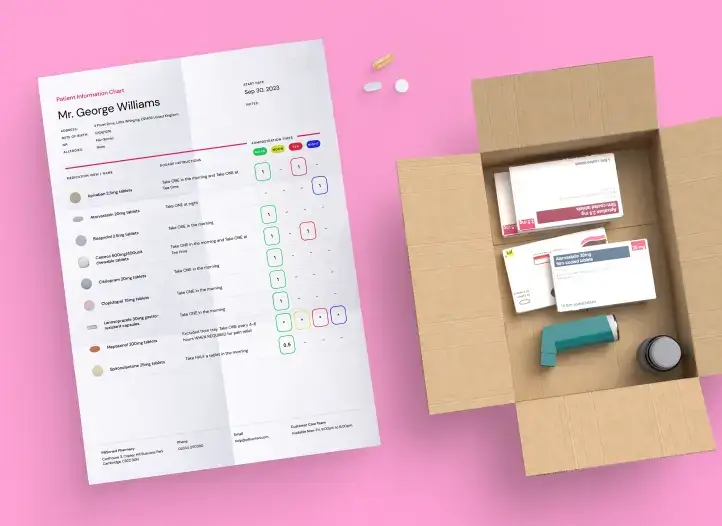
All third-party trademarks (including logos and icons) referenced by PillSorted remain the property of their respective owners. Unless specifically identified as such, PillSorted’s use of third party trademarks does not indicate or imply any relationship, sponsorship or endorsement between PillSorted and the owners of these trademarks.





